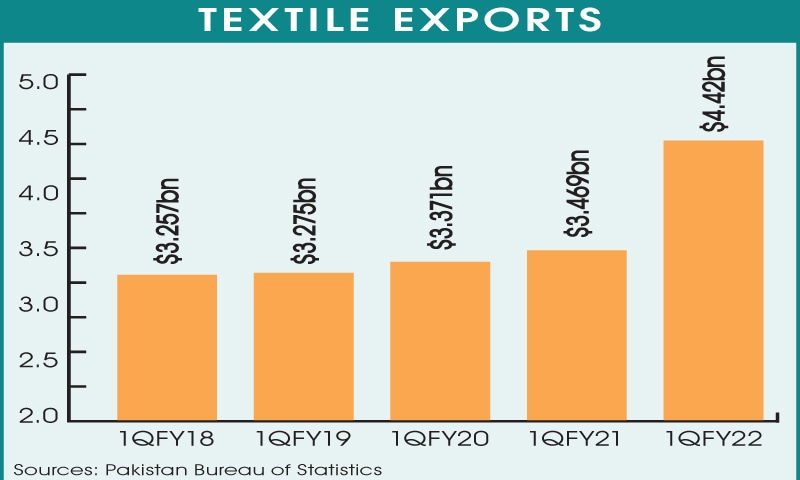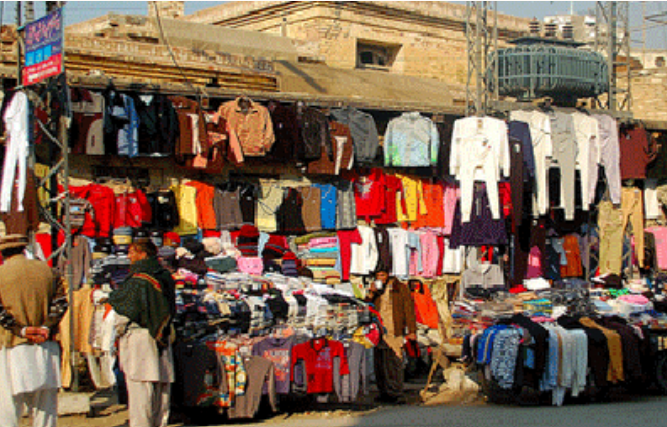Factors Affecting Yarn Prices in Pakistan
The textile industry in Pakistan is the only sector that grows constantly, bringing in foreign exchange to the country, with close to $15 billion in exports in July-March (2021-22). The textile industry has performed remarkably in the past year without fail.
This industry in Pakistan has an enormous impact on the economy and it finds itself in potential distress because of the increasing prices of yarn in Pakistan, which in turn is negatively impacting the exports. The reasons for the increase in yarn prices in Pakistan are the current economic crisis and the increase in the dollar rate.
The yarn market has constantly been fluctuating over the past few months and though you may not be able to predict the exact prices of yarn in Pakistan it is essential is knowing what factors affect yarn prices.
What factors are influencing yarn prices in Pakistan?
Dollar rate
There is a huge shortage of yarn globally because of shrinking capacities and acute power and labor shortages. This combined with the devalued rupee and high petrol rate has given rise to this overwhelming change in yarn price in Pakistan.
The surging dollar rate and the ever-increasing price of electricity, gas, petrol, cotton, and yarn price in Pakistan are all badly affecting the entire textile industry chain. The result of which will neither be great for the national economy nor the local entrepreneurs.
Raw material prices
The cost of the spinning mills depends on the price of the raw materials which also gives you an idea of yarn prices in Pakistan. If the cost of the spinning mills is increasing then the price of the yarn in Pakistan may go up as a result shortly.
Yarn prices
The most important factor is the price of the yarn itself and it’s important to keep track of the rising and fluctuating prices so you know where it's headed. The best practice is to keep a constant track of yarn prices in Pakistan over the past week and even the past month giving insight into where the market is going to go. Yarn prices have been increasing not just in Pakistan but globally and an increase in its prices will increase the cost of doing business which will be passed on to buyers.
Prices of yarn in Pakistan per bag have increased by 70 - 80%, creating numerous problems for the textile industry including fabric traders, power-loom owners, and local dealers.
Yarn exports
Pakistan does a significant amount of textile exports in the international market and keeping a track of the export figure for the past month will automatically let you know whether there has been an increase or a decrease in yarn in the domestic market.
Demand and Prices of Fabrics
You need to figure out whether there is a huge demand for fabric and whether the price of the fabric itself is high. This will be an indicator of whether the fabric demand is high or low which will affect whether yarn prices in Pakistan will go up or down.
Market sentiment
Market sentiment plays a massive role in the textile industry because if the general sentiment is that the prices will be increasing it may very well affect the yarn price in Pakistan. In short, market sentiment drives demand and supply, which in turn leads to price movements.
Due to extreme volatility, the buyers and sellers of yarn tend to de-risk their businesses hence using the market sentiment and word of mouth to make buying decisions hence affecting the prices of yarn when a particular sentiment takes the lead. Market sentiment analysis is one of the most successful methods of predicting yarn prices in Pakistan. There are tonnes of evidence that tells us that investor and buyer sentiment is one of the most reliable indicators of future price movements.
Seasonality and holidays
Seasonality means forecasting by inventory teams who identify and manage the peaks and lows in fabric and yarn demand at certain times of the year. For example, fabric and yarn will see a sharp demand increase before Eid, but will then slow down soon after.
If and when there are any upcoming holidays such as Eid in the next 3 months the fabric demand will usually go up. This is because during these holidays nationwide there is a trend of getting new clothes which indicates a mass increase in fabric demand during a particular period. To cater to these demands sellers start buying at least a few months in advance which in turn affects yarn prices in Pakistan which will also rise with the increased demand.
Global markets
Global commodities markets have a severe impact on cotton prices and hence cotton yarn prices in Pakistan. These markets where cotton is traded among buyers and sellers daily have the greatest influence on the price of cotton. The markets represent not only current, real-time supply and demand, but prices can also fluctuate based on worldwide events that will influence future markets.
From a market perspective, another key factor in determining cotton and yarn price in Pakistan is the amount of cotton that China will import annually. With a massive population, China can and does influence many commodity markets causing large price swings based on its economic performance and its resulting supply and demand.
Polyester and Cotton price
There is an expected increase in polyester yarn prices due to rising oil prices which may hit textile exports soon. Over 70 percent of the Polyester fiber is supplied to the spinning sector. The remaining is mainly supplied to the PET packaging industry for making plastic bottles.
Pakistan’s cotton production has been witnessing a massive decline over the last couple of years and had reduced by about 35% to 5.57 million bales by the end of January 2021. This has been the lowest in 30 years and has resulted in Pakistan being a net importer of cotton increasing overall costs.
The mix of natural and synthetic fibers varies depending on the type of yarn produced. In the last financial year, Pakistan’s polyester Industry is recorded to be around 109 billion. This industry suffered severely due to the pandemic but managed to recover and expand by around 40% in the 2021 financial year.
Despite all this, the country relies on imports to meet the demand and the rising global prices of cotton will affect the sector’s profit margins. The greater reliance on imported raw materials increases currency risk exposure due to the volatility of the exchange rate.
How does this impact textile exports?
Faisalabad is the textile capital of Pakistan and its yarn market is one of the biggest in Asia. The textile industry in Pakistan is not only lucrative but also provides jobs to thousands of people. However, the spinning sector in Pakistan has increased the prices of yarn in Pakistan which will lead to the forced closure of many businesses and a reduction in textile exports in the value-added sector.

The textile and fabric market has always been a great source for exporters who would contact the local dealers in case of a shortage of any fabric, yarn, or cotton because the local dealers purchase the stock from the big textile units. However, the local dealers and entrepreneurs have suffered because such units are now difficult to sell because of the increase in yarn prices in Pakistan.
There has been a constant increase in yarn prices in Pakistan causing the cancellation of many orders due to the high prices. Many business commitments have been delayed because the steep yarn price in Pakistan hike put an unexpected stop on original manufacturing plans and timelines.
This immense increase in yarn prices in Pakistan is leading to incredible amounts of financial loss because of small businesses are unable to fulfill contracts or because of clients pulling out of the deal.
Our competitors in the region like India, Bangladesh, and Vietnam are seizing global markets rapidly, taking full advantage of our economic issues. Additionally, foreign buyers are also reluctant to place export orders with Pakistan because of the current uncertainty here and the increase in cotton and yarn prices has forced domestic and international buyers to try and renegotiate deals
Yarn manufacturers and local dealers fear the possibility of losing their shares in export markets, where they made rapid growth earlier in the year.
The high price is foreshadowing economic loss for the industry as a whole which will lower its growth, which had just bounced back post-pandemic. Going off of the global demand and favorable economic conditions, Pakistan had shipped out textiles, garments, and allied products worth almost $20 billion just earlier in the year. But given this steep yarn price hike, the growth is bound to slow down. But amid all the volatility you can conveniently procure raw materials such as yarn at the best possible rates from Zaraye.
A great solution would be for the government to form a regulatory body to control the prices of cotton and yarn so that the textile sector can be saved as it is at the center of the national economy. With the importance of the industry to the Pakistani economy, the increased yarn prices will have a negative impact overall if measures are not taken to protect the industry and its people.
Which is the largest textile industry in Pakistan?
Nishat Mills Ltd located in Lahore is the biggest textile company.
It is a modern textile company that is the largest vertically integrated textile company in Pakistan. Nishat group is present in all major sectors in Pakistan including Textiles, Cement, Banking, Power Generation, Insurance, Agriculture, and Paper Products.
What is Yarn Price in Pakistan?
Yarn Price in Pakistan has been consistently volatile and changes on a day-to-day basis. Not only that but the difference in the price of yarn in Pakistan also depends on the quality, type, and brand you buy from. To get the latest yarn price in Pakistan contact Zaraye to get a quote!















.png)



_1000.png)

